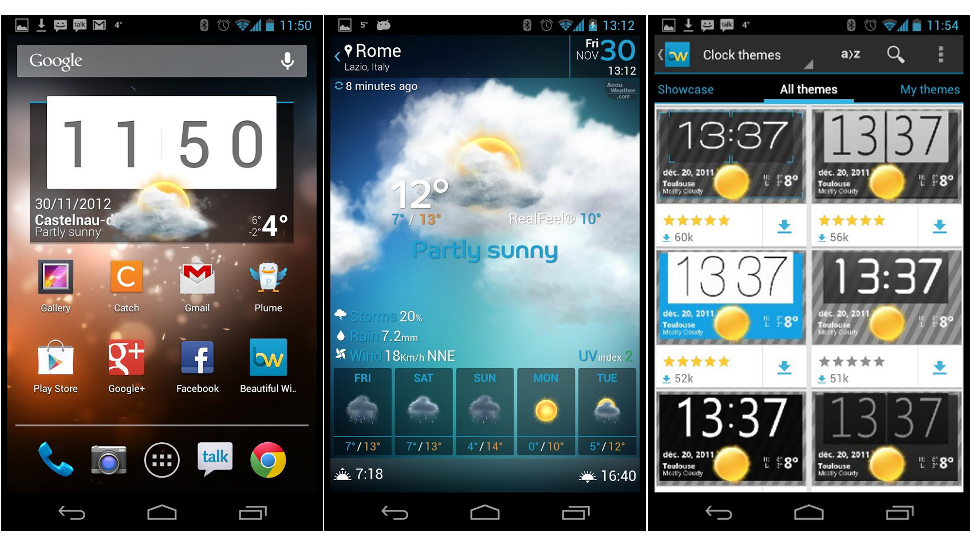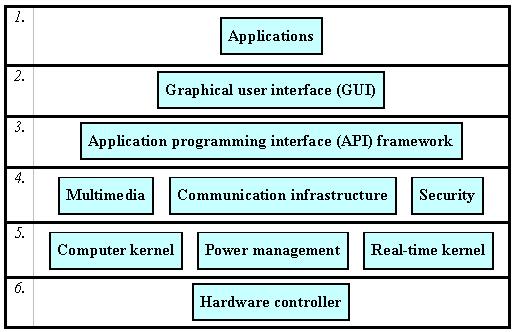| Few OSs with small footprints and reduced storage capacity have emerged to support the computing-related functions of mobile devices. |
| Because the handheld device is small and has limited power and memory, the mobile OSs’ requirements are usually less than those of desktop OSs. |

|

|
This figure shows a typical mobile operating system, which can be visualized as a six-layer stack. There are several differences between mobile and desktop operating systems: |
- The real-time kernel manages the phone communications links and is not found on the standard desktop OS.
- The power management component is also not found on the standard desktop OS.
- Communication infrastructure is needed for mobile and wireless communication.
- Applications use the API to display information on the GUI, which is more limited in a mobile OS than in a desktop OS.
|
Do not bother Joseph when he is in his cups (drunk) — he is very irritable. |